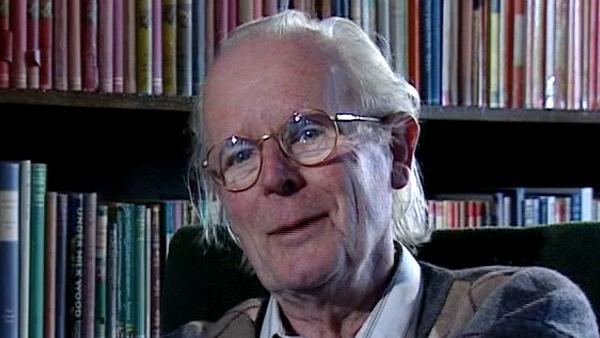NEXT STORY

Haldane's reaction to the Lysenko affair
RELATED STORIES

NEXT STORY

Haldane's reaction to the Lysenko affair
RELATED STORIES


|
Views | Duration | |
|---|---|---|---|
| 31. Work on ageing | 847 | 03:36 | |
| 32. Changing patterns in fruit flies through genetic manipulation | 732 | 02:40 | |
| 33. Haldane's reaction to the Lysenko affair | 2 | 1179 | 04:29 |
| 34. The story of Haldane's last words | 2 | 1558 | 02:16 |
| 35. The move to Sussex University | 792 | 01:19 | |
| 36. Bill Hamilton | 1365 | 04:26 | |
| 37. The first idea of population regulation by group selection | 1 | 1117 | 05:12 |
| 38. Hamilton and Haldane's ideas of 'inclusive fitness' | 1053 | 01:52 | |
| 39. Hamilton: political and ideological commitment | 1036 | 02:42 | |
| 40. WD Hamilton: inclusive fitness | 2 | 1201 | 04:21 |


It's all very well saying that genes control development, but you know, that can't be possibly be true in a way. How do they make shapes? And... as you know, that's an enormously active field of research right now. I was fascinated by it between 1950 and 1960s, '65 or so, and I still am interested. I tried to approach it by a sort of quantitative genetics approach of taking morphological patterns in fruit flies and seeing how far I could change them by selection. Could I cause the fly to have different patterns of bristles on its head and that sort of thing. The notion at the back of my mind was that if you can answer the question, what changes can happen and what changes can't happen, by genetic selection, it may give you a clue to what the machinery is. I don't think it was a silly idea but I'm not convinced it really led anywhere very much. I mean, I think what's led somewhere is the identification of specific genes with specific effects on adult morphology, which, as you know, is very exciting at the moment. I guess - I think, really to push that approach to the direction it's been pushed in the last 20, 30 years, one needed molecular techniques that simply weren't available in the 1950s. So even if I'd thought of it, I probably couldn't have done it.
[Q] But you had things like the observation that certain groups of mammals produce horns and others don't, getting clues, I suppose.
Yes, there were clues around, but my feeling is that until one could do what one can do now, which is to not only identify genes but to sequence them, find out exactly in which tissue they first become active, find what happens if you knock them out, even find out what happens if you take them and transfer them into a different organism or a different tissue. When you can do all those things, you really can begin to sort of piece together a causal theory of ageing... of development. We couldn't do any of those things in those days, we couldn't sequence genes, we couldn't move them around; all we could look at were the, sort of, the final results, the morphology. And although I was very devoted to the subject and thought about it a lot - well it's never a waste of time to think about something, but I'm not really sure that I got anywhere very much with it.
The late British biologist John Maynard Smith (1920-2004) is famous for applying game theory to the study of natural selection. At Eton College, inspired by the work of old Etonian JBS Haldane, Maynard Smith developed an interest in Darwinian evolutionary theory and mathematics. Then he entered University College London (UCL) to study fruit fly genetics under Haldane. In 1973 Maynard Smith formalised a central concept in game theory called the evolutionarily stable strategy (ESS). His ideas, presented in books such as 'Evolution and the Theory of Games', were enormously influential and led to a more rigorous scientific analysis and understanding of interactions between living things.
Title: Changing patterns in fruit flies through genetic manipulation
Listeners: Richard Dawkins
Richard Dawkins was educated at Oxford University and has taught zoology at the universities of California and Oxford. He is a fellow of New College, Oxford and the Charles Simonyi Professor of the Public Understanding of Science at Oxford University. Dawkins is one of the leading thinkers in modern evolutionary biology. He is also one of the best read and most popular writers on the subject: his books about evolution and science include "The Selfish Gene", "The Extended Phenotype", "The Blind Watchmaker", "River Out of Eden", "Climbing Mount Improbable", and most recently, "Unweaving the Rainbow".
Tags: Drosophila
Duration: 2 minutes, 41 seconds
Date story recorded: April 1997
Date story went live: 24 January 2008